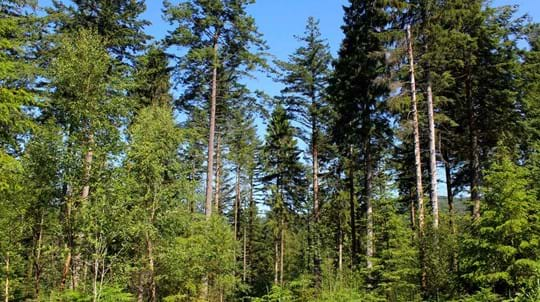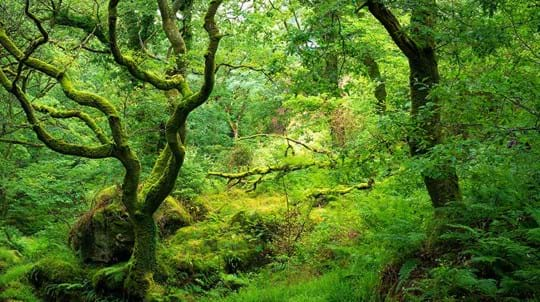Advice and support
If you own an ancient wood, we can guide you through the restoration process.
Find out more and contact usAncient woodland status should be based on an assessment of the available evidence. This includes checking the ancient woodland inventory, examining old maps, documentary evidence and remnant manmade features, and assessing the species which occur on a site.
If you think your wood could be ancient, the first place to look is the ancient woodland inventory (AWI) for your country.
While great effort is made to record every ancient woodland, some have undoubtedly been missed. The inventories are evolving and records of centuries-old ancient woodland continue to be added as new information is found.
Note that many woods under 2ha are currently not included in the English inventory, although it is likely that these will be added as the AWI in England is updated.
Look for archival information at your local records office. These can be a valuable source of information on ancient woodland.
Old maps may show whether land was wooded. Check for irregular shaped boundaries, unfenced boundaries and wood names. For example, in England names containing 'hagg' or 'spring' are Norse and Saxon names for coppiced woods. In Scotland, woods with Gaelic names usually indicate pre-18th century origin - the language was banned after the 1745 uprising.
Nineteenth century Ordnance Survey (OS) maps are excellent. In Scotland, use them alongside the inventory. The recommended map is First Edition OS 6” to the mile. View old maps for Scotland online at the National Library of Scotland.
In England and Wales, the First Edition OS County Series or Epoch 1 maps are recommended. The original Ordnance Surveyors drawings produced between 1780 and 1840 are available (south of Hull) from the British Library. Old maps are available from the Historical Map Archive.
Old estate maps and tithe maps (showing land use at the time of enclosure) can also be invaluable. Look for them at county archives. The tithe maps for Wales (mid 1800s) have been fully digitised and are accessible online.
Various features can help identify that a site has been wooded for a considerable length of time.
Some plant species are a good indication of ancient woodland and have been listed as ‘ancient woodland indicator plants’. The cumulative number is important – the more species you can find, the stronger the evidence. These include plants such as:
Ancient woodland indicators should be considered alongside other evidence, and other groups of species can also help indicate a continuity of woodland conditions. These include groups of invertebrates, such as insects associated with decaying wood and terrestrial molluscs, and lichens.
Remnant manmade features give clues about a wood’s cultural history. Some can suggest a wood is ancient, such as medieval wood banks, large coppice stools and old pollarded trees.
The rich, unique landscapes of Britain's ancient woodlands are full of both natural and archaeological features.
The tree canopy provides shelter and a plethora of insects for woodland birds. Large, gnarly trunks have great crevices and holes, perfect for sheltering owls, bats, woodpeckers and insects. Gaps in between thick, exposed roots are ideal hideaways for small mammals, foxes and badgers.
Incredibly, the English oak can live for over a thousand years and supports more native wildlife than any other tree species in ancient woodland.
A fascinating landscape lies under the tree canopy. The scrub on the woodland floor is a mix of flowering plants, young trees and herbaceous shrubs, which are perfectly adapted to the dappled light and provide an important food source for pollinators during spring.
Ancient organisms called lichens cloak the trees, stones and fallen wood. Lichens can take several hundred years to grow and display an incredible range of colours, textures and shapes. Fungi break down the dead wood, returning valuable nutrients to the rich soil.
Man-made dry stone walls and wood banks give us a glimpse of how our ancestors used ancient woodland. Coppice stools are tree stumps that have formed where multiple stems are repeatedly cut and have regrown from a tree. They give us a living photograph of age-old practices.
These treasures are a tangible link to a long lasting and invaluable relationship between man and woods.
If you own an ancient wood, we can guide you through the restoration process.
Find out more and contact us
Protecting trees and woods
Discover how we restore and maximise the ecological integrity and resilience of these incredibly special places.

Trees woods and wildlife
Home to myth and legend, where folk tales began. It fuelled our ancestors and still houses thousands of species. Ancient woodland has grown and adapted with native wildlife, yet what remains only covers 2.5% of the UK.